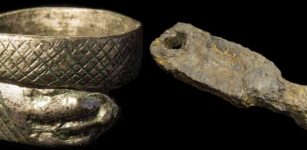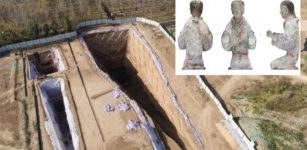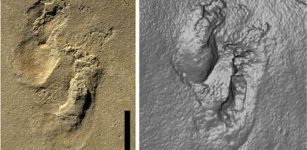Undersea Scans Reveal Astonishing Ancient Submerged World Of The Adriatic Sea
Jan Bartek - AncientPages.com - The Life on the Edge project, a collaborative effort between the University of Bradford's Submerged Landscapes Research Centre and the Faculty of Humanities and Social Sciences of the University of Split, has made a remarkable discovery through the first-ever high-resolution archaeological underwater scans of the Adriatic Sea off the coast of Croatia. These scans have revealed the remains of an astonishing network of streams, rivers, and other geological features that were once above ground.
Credit: University of Bradford
This groundbreaking discovery is part of a series of expeditions planned over the next five years. During these expeditions, the project aims to map parts of the Adriatic and the North Seas as they existed between 10,000 and 24,000 years ago when sea levels were approximately 100 meters lower than they are today. By mapping these submerged landscapes, researchers hope to gain valuable insights into the ancient environments and the lives of our ancestors who inhabited these now-submerged regions.
Principal investigator Dr Simon Fitch said the results are astonishing and that they provided way more detail than the science team was expecting.
“It’s a more diverse landscape and it's better preserved than we expected. The unique environment of the area around Split, which is quite sheltered, has preserved a lot of it. There are beautifully preserved rivers and estuaries buried beneath what is now the seafloor,” Dr. Fitch said in a press release.
The scientists announced the ultimate goal is to find submerged human artifacts.
Dr. Fitch and the research team's recent findings have shed light on the submerged landscapes off the Croatian coast, providing valuable insights into the region's archaeological significance. Using high-resolution sensors, they discovered an intricate network of rivers and water bodies on the seabed, suggesting a higher likelihood of human habitation in the area during prehistoric times.
These discoveries are crucial for understanding Croatia's pivotal role in the Adriatic region and its position as a gateway to Europe. As agriculture spread across the continent, this landscape would have played a crucial role, making it an area of immense archaeological interest.
Moreover, the rapid inundation of these coastal areas by rising sea levels would have had a profound impact on the people and cultures that inhabited them. By reconstructing and studying these submerged landscapes, researchers can gain a more comprehensive understanding of the archaeological record and the cultural dynamics of the region.
Credit: University of Bradford
Coastal regions have historically been prime locations for human settlements, and the loss of these areas to the sea has obscured much of the archaeological evidence. However, identifying these preserved landscapes opens up new avenues for exploration and the potential discovery of human artifacts.
See also: More Archaeology News
The researchers' ultimate goal is to locate and study these artifacts, which would provide invaluable insights into the archaeology and culture of the region, offering a more holistic perspective. To further their investigations, the team plans to send divers to inspect some identified sites this year.
Written by Jan Bartek - AncientPages.com Staff Writer






















